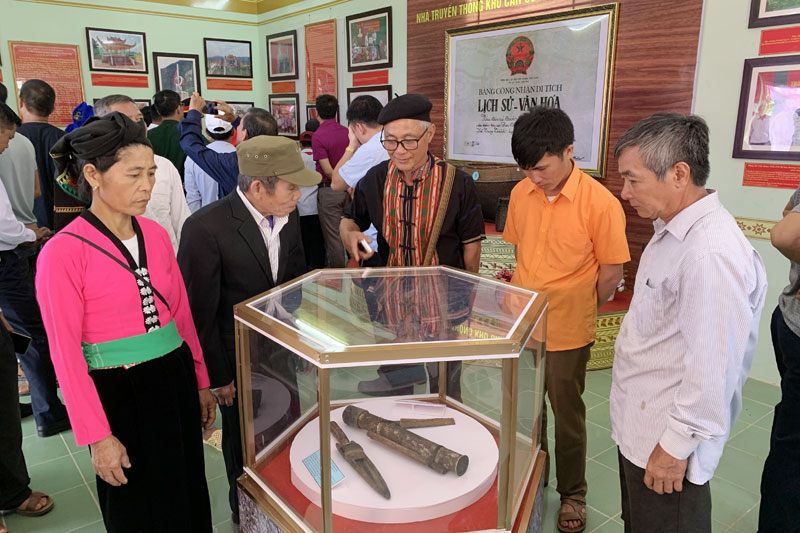
(HBO) - The authorities of Hoa Binh province have paid special attention to preserving and promoting cultural and heritage values of local relic sites.
The provincial museum has maintained a gallery on the typical cultural heritage
of Muong ethnic people in the locality. It also successfully organized exhibitions
on President Ho Chi Minh - the genius leader of the Vietnamese Party and people,
the 90-yearglorious historyof the Communist PartyofVietnam (CPV),
and outstanding achievements of the CPV and the provincial Party organization reflectedthrough Party congresses.
The museum has completed the restoration of two ancient bronze drums and the
dossiers of 41 relics and antiques, while working
on scientific
dossiers of three relic sites – the Song and Hoang Cung Nuoc Ngoc caves
in Da Bac district, and Khoi Communal House in Lac Son district.
Four more relic sites in
the locality were recognized as provincial-level cultural and historical relics,
including Khenh and Bang communal houses in Lac Son district, the RelicA2 Baseof Nhan Dan newspaperin Luong Son district, and Ba Bi Communal House in Kim Boi district.
The province also conducted restoration at Trung Bao Communal House and Temple
in Luong Son district, and Chua Cave in Yen Thuy district./.
The People’s Committee of Lac Son district held a ceremony on April 28 to receive the provincial relic certificate for the ancient rock carving site at Suoi Co stream, located in My Thanh commune.
A special music show titled "The country is in the fullness of joy” has been held at Hoa Binh Square in Hoa Binh city in celebration of the 50th anniversary of the liberation of the South and national reunification (April 30, 1975–2025).
The People's Committee of Lo Son commune, Tan Lac district, has organised the local annual traditional stream fishing festival on April 19 - 20.
As a land deeply intertwined with human history and Vietnam’s millennia-long journey of nation-building and defence, Hoa Binh is often revered for its epic tales and legends.
Residents of Hoa Binh boast a rich cultural identity, reflected in their unique language, traditional attire, customs, and folk melodies – described as "sweet as honey, clear as a mountain stream.”
Lac Son district’s Vu ban town held the 2025 Truong Kha temple festival on April 12–13 (the 15th–16th days of the third lunar month). Since its revival in 2019, the festival has been organised every three years, preserving valuable intangible heritage while meeting the community’s cultural and spiritual needs.


